NRNP 6541 – Primary Care of Adolescents and Children Course Assignments & Discussions Study Guide
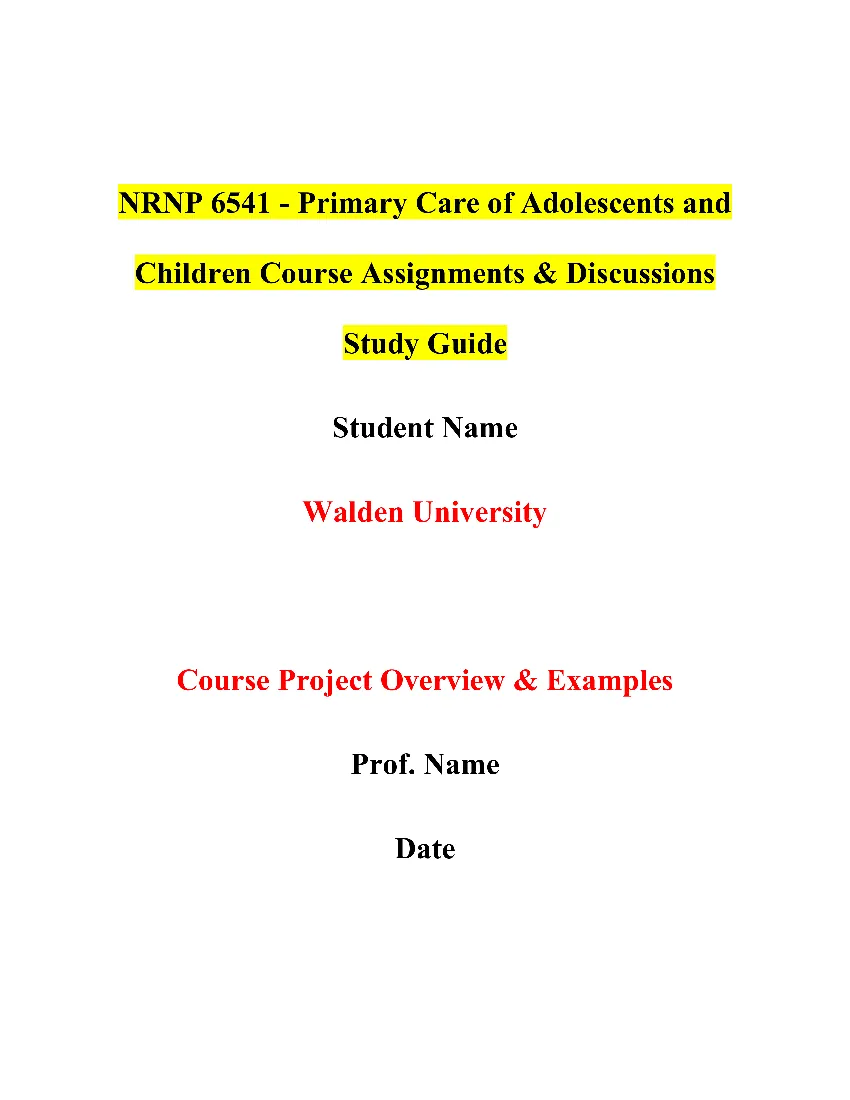 NRNP 6541 – Primary Care of Adolescents and Children Course Description
NRNP 6541 – Primary Care of Adolescents and Children Course Description
3 credits
How can a nurse practitioner master the art and science of clinical decision making among pediatric populations? This course provides students with the opportunity to answer this question as they examine content related to the primary healthcare of pediatric patients, from newborn through adolescence (up to age 21), while focusing on growth and development, health promotion, and common primary care health problems. Students learn how to identify, diagnose, and manage these problems. They also gain confidence in clinical experience in a primary healthcare setting that provides opportunities to assess, diagnose, plan, implement, and evaluate therapeutic regimens for acute and chronic illnesses commonly found in children and adolescents.
Prerequisites
For top-quality coursework writing help and assignment writing services, trust Nursing Custom Writing. Our expert team delivers 100% original human-written work tailored to your needs. Contact us via phone, WhatsApp, or live chat for assistance today and get the most reliable research paper help!
NRNP 6541 – Primary Care of Adolescents and Children Course Syllabus & Assignments Summary
NRNP 6541 – Week 1: Overview of Growth and Development and Genetic Conditions
NRNP 6541 – Discussion: Getting Started with Pediatrics
NRNP 6541 – Week 1 Discussion
NRNP 6541 – Assignment: i-Human Case Studies
NRNP 6541 – Assignment 2
NRNP 6541 – Practicum Manual Acknowledgment
NRNP 6541 – i-Human Case Study
NRNP 6541 – Week 2: Infants, Toddlers, and Preschoolers
NRNP 6541 – Assignment: i-Human Case Study: Evaluation and Management of Growth and Development Issues
NRNP 6541 – Week 3: School-Age Children and Adolescents
NRNP 6541 – Knowledge Check: Module 1: Evaluation and Management of Growth and Development Issues
NRNP 6541 – i-Human Case Study Assignment on Eye, Ear, Nose, and Throat conditions
NRNP 6541 – Module 2: EENT, Respiratory and Cardiovascular, and Dermatological Conditions
NRNP 6541 – Week 4: Evaluation and Management of EENT Conditions
NRNP 6541 – Assignment: i-Human Case Study: Evaluation and Management of EENT Conditions
NRNP 6541 – Week 5: Evaluation and Management of Respiratory and Cardiovascular Conditions
NRNP 6541 – Midterm Exam
NRNP 6541 – Week 6: Evaluation and Management of Dermatological Conditions
NRNP 6541 – Knowledge Check: Module 2: EENT, Respiratory and Cardiovascular, and Dermatology
NRNP 6541 – Midterm Exam
NRNP 6541 – i-Human Case Study addressing gastrointestinal conditions in pediatric patients
NRNP 6541 – Week 7: Evaluation and Management of Gastrointestinal Conditions
NRNP 6541 – Assignment: i-Human Case Study: Evaluation and Management of Gastrointestinal Conditions
NRNP 6541 – i-Human Case Study on renal and GU conditions in children and adolescents
NRNP 6541 – Week 8: Evaluation and Management of Renal and Genitourinary Conditions
NRNP 6541 – Assignment: i-Human Case Study: Evaluation and Management of Renal and Genitourinary Conditions
You can also read another study guide on nursing assignments for students from another post on NRNP 6565 – Synthesis in Advanced Nursing Practice Care of Patients in Primary Care Settings Course Assignments & Discussions.
Week 1
Week 1: Overview of Growth and Development and Genetic Conditions
How many times have you wished you had a crystal ball? How often have you thought, If only I had known…in relation to personal and professional decisions? We all wish we always had the best information and advice available for charting the best path forward.
Sometimes we have the information we need—and sometimes we are that crystal ball for others. Specifically, as a nurse practitioner engaged in pediatric care, you have a significant role in setting young people on a healthy path through life. Certainly, a crystal ball is not among your professional tools. (And how much easier would your work be if it were?) Rather, your knowledge of factors for optimal growth and development, and guidance for families in establishing habits that help children thrive, can support longer, happier, and more productive lives for your pediatric patients.
Understanding what impacts growth and development in positive or adverse ways enables you to both treat specific conditions and promote wellness. Here, too, knowledge is key. Not only in terms of information such as a family’s genetic history, but in working closely with families to learn their ideas of what matters for children’s growth and development. Appreciating and respecting cultural perspectives is vital in creating a foundation of trust for encouraging healthful choices and decisions for children and, as they age into adolescence, by them as well.
This week you will begin with an overview of human growth and development that continues with more depth in the weeks that follow. Through the Week 1 text readings and other Learning Resources, you will also examine fundamentals of pediatric care and analyze the challenges and opportunities this course provides in meeting your career goals. No crystal ball required—just thoughtful consideration of the path you aim to follow in advanced nursing as a Family Nurse Practitioner.
Learning Objectives
Students will:
- Analyze strengths and challenges related to advanced nursing in pediatric care
- Analyze career goals and objectives in pediatrics
Learning Resources
Required Readings (click to expand/reduce)
Required Media (click to expand/reduce)
Discussion: Getting Started with Pediatrics
Photo Credit: Seventyfour / Adobe Stock
Primary care of children from newborns to those on the cusp of adulthood requires considerable knowledge, as well as the finesse to manage parents and families of all types, and the changing needs, attitudes, and independence of young people as they grow and mature. Considering that this week—in fact, this entire first module—is focused on growth and development, it is fitting for you to reflect on your current and anticipated
growth and development in advanced nursing, and specifically, in pediatric care. When you made your decision to pursue training as a Family Nurse Practitioner, how did pediatrics factor in your thinking? Is the opportunity to work with children and adolescents a strong motivator, or does it rank for you as more of a concern?
As you get started with this course, take time to reflect on your present capacity as you prepare to immerse yourself in the requirements of pediatric care as a nurse practitioner. How can you benefit most from this course, and how can it further you along the professional path you have chosen or in achieving your career goals?
This Discussion can be a catalyst for self-assessment and offer valuable insights from your colleagues. It is also an opportunity to get to know them and to introduce yourself, in anticipation of further interaction as you engage in the course i-Human Assignments.
To prepare:
- Review this week’s Learning Resources, and particularly Chapters 5, 6, 8, and 14 of the Burns’ Pediatric Primary Care text.
- Consider the roles and responsibilities of a nurse practitioner providing pediatric primary care. Work to define the strengths you bring to the position of Family Nurse Practitioner and the challenges you face.
- Reflect on this course and what you expect to learn and do, such as by reviewing the course description, outcomes, and course introduction. Consider how the next 11 weeks can help build your strengths and address your challenges.
- Also consider your career goals and objectives and how this course can support and/or further them. Be detailed in your thinking.
By Day 3 of Week 1
Post a brief introduction of yourself that includes an explanation of your strengths and challenges as they apply to pediatrics and the role of a Family Nurse Practitioner. Also explain your career goals and objectives, and how your work in this course can help to accomplish those goals and objectives as a Family Nurse Practitioner. Use your research to support your explanations by providing credible and scholarly sources.
Read a selection of your colleagues’ responses.
By Day 6 of Week 1
Respond to at least two of your colleagues’ posts on two different days by offering suggestions or resources to help your colleagues in addressing their professional strengths, challenges, or career goals and objectives. Use your research to support your suggestions. Provide at least 3 credible and current scholarly sources.
Note: For this Discussion, you are required to complete your initial post before you will be able to view and respond to your colleagues’ postings. Begin by clicking on the “Post to Discussion Question” link and then select “Create Thread” to complete your initial post. Remember, once you click on Submit, you cannot delete or edit your own posts, and you cannot post anonymously. Please check your post carefully before clicking on Submit!
Submission and Grading Information
Grading Criteria
To access your rubric:
Week 1 Discussion Rubric
Post by Day 3 and Respond by Day 6 of Week 1
To Participate in this Discussion:
Week 1 Discussion
Assignment: i-Human Case Studies
Photo Credit: Oksana Kuzmina / Adobe Stock
In the weeks ahead, you will be required to complete assignments addressing specific health conditions through a virtual patient encounter using the i-Human simulation software. You will have a total of six i-Human Case Study Assignments throughout the course, which you will complete in the i-Human Patients platform.
In preparation for your first assignment, ensure that you are able to login to the software. Refer to the Student Manual in the Learning Resources for this week for support in navigating i-Human.
In addition, you are highly encouraged to explore the practice case, available in the Week 1 Learning Resources. No grade will be assigned for this practice case, but it must be completed in Week 1 to receive feedback.
No Assignment submission required for this week.
Assignment 2
Practicum Manual Acknowledgment
The Practicum Manual describes the structure and timing of the classroom-based and practicum experiences and the policies students must follow to be successful in the nurse practitioner (NP) specialties.
Click here and follow the instructions to confirm you have downloaded and read the entire MSN Nurse Practitioner Practicum Manual and will abide by the requirements described in order to successfully complete this program.
What’s Coming Up in Week 2?
Practicum – Upcoming Deadline
In the Nurse Practitioner programs of study (FNP, AGACNP, AGPCNP, and PMHNP) you are required to take several practicum courses. If you plan on taking a practicum course within the next two terms, you will need to submit your application via Meditrek .
For information on the practicum application process and deadlines, please visit the Field Experience: College of Nursing: Application Process – Graduate web page.
Please take the time to review the Appropriate Preceptors and Field Sites for your courses.
Please take the time to review the practicum manuals, FAQs, Webinars and any required forms on the Field Experience: College of Nursing: Student Resources and Manuals web page.
Photo Credit: [BrianAJackson]/[iStock / Getty Images Plus]/Getty Images
Next week, you will continue your focus on growth and development with a detailed exploration of the first years of life. In considering primary care of infants, toddlers, and preschoolers, you will explore issues that can affect young children’s growth and development.
i-Human Case Study
Photo Credit: Getty Images/iStockphoto
In Week 2, you will complete your first i-Human Case Study Assignment on evaluation and management of growth and development issues. Be sure you have your i-Human login and password, and contact your Instructor if you are missing this information.
To go to the next week:
Week 2
Week 2: Infants, Toddlers, and Preschoolers
When we think of human growth and development, perhaps no age comes to mind more vividly than the youngest children. Tracking the extraordinary changes that occur with often amazing speed from birth to the advent of formal schooling around age 5 is exciting, awe-inspiring, and frequently, anxiety producing for families. The spectrum of where children may fall in growth and development is particularly wide in these years. And recognizing when extra attention is needed or a condition is present to be addressed can be made more complicated by family interpretations or expectations, and the limited capacity of infants, toddlers, and preschoolers to convey what they are, or are not, experiencing.
Primary care of infants, toddlers, and preschoolers requires both detective and diplomatic skills on the part of nurse practitioners. Assessing very young children involves employing knowledge of child development and developmental milestones with what you can observe and interpreting red flags that may signal developmental issues. As to diplomacy, families can hold beliefs, notably resistance to vaccines and immunization protocols, which impact young children’s health and well-being. Working with families to understand and address their ideas, preferences, and possible misconceptions is vital for developing a solid care team of key adults and you.
This week you will prepare for your youngest patients with Learning Resources on topics related to care and development of infants, toddlers, and preschoolers, as well as recognizing and responding to developmental concerns. Through your first i-Human Case Study Assignment this week, you will assess, evaluate, diagnose, treat, and manage patients with potential growth and development issues. Keep in mind that considering the unique needs of the family is an essential element of this and every pediatric visit in the course, and your future practice.
Learning Objectives
Students will:
- Assess growth and development in pediatric patients
- Evaluate health conditions of pediatric patients
- Formulate differential diagnoses for pediatric patients
- Analyze socio-cultural needs of pediatric patients and families
- Formulate evidence-based treatment and management plans
- Recommend evidence-based care strategies and wellness education for pediatric patients and families
Learning Resources
Required Readings (click to expand/reduce)
Required Media (click to expand/reduce)
Assignment: i-Human Case Study: Evaluation and Management of Growth and Development Issues
Photo Credit: Getty Images/Blend Images
Imagine this is your first day or perhaps your 500th day as a Family Nurse Practitioner. You enter the examination room where a young child—infant, toddler, preschooler—and one or more family members, who may be a parent, grandparent, or other caregiver, are waiting for you. Imagine the child and family are new patients, and this is your first time meeting them.
That introduction sets the stage for this Assignment. You will use the i-Human technology to meet and treat your avatar pediatric patient. Pay particular attention to the socio-cultural details that are provided for the featured family. Consider what would be important for you to know and to ask in order not only to assess, evaluate, and diagnose a young child, but also to develop evidence-based treatment and management plans and recommend specific activities and routines to promote health and wellness.
To prepare:
- Review the Learning Resources. Consider how to apply understanding of developmental milestones and socio-cultural family needs in assessing, diagnosing, and treating pediatric patients.
- Access i-Human Patients from this week’s Learning Resources and review the i-Human Case Study. Based on the provided patient information, think about the health history you would need to collect from the patient.
- Consider what physical exams and diagnostic tests would be appropriate to gather more information about the patient’s condition. Reflect on how the results would be used to make a diagnosis.
- Identify 3–5 possible conditions that may be considered in a differential diagnosis for the patient.
- Consider the patient’s diagnosis. Think about clinical guidelines that might support this diagnosis.
- Develop a treatment plan for the patient that includes health promotion and patient education strategies for patients and families.
Assignment:
As you interact with this week’s i-Human patient, complete the assigned case study. For guidance on using i-Human, refer to the i-Human Graduate Programs Help link within the i-Human platform.
By Day 7 of Week 2
Complete your Assignment in i-Human.
Grading Criteria
To access your rubric:
Week 2 Assignment Rubric
What’s Coming Up in Week 3?
Photo Credit: [BrianAJackson]/[iStock / Getty Images Plus]/Getty Images
Next week, you will focus on growth and development of school-age children and adolescents up to age 21, when young people transition to adult care. Although you will not have an i-Human Case Study Assignment next week addressing this specific age group, looking ahead to other modules in the course, you will have i-Human Assignments that feature patients ages 5 and older. Careful attention to key aspects of growth and development for school-age children and adolescents will support your work in future weeks.
Knowledge Check
Next week, you will take the Module 1 Knowledge Check. This formative assessment will include questions pertaining to content from Weeks 1–3. Plan your time accordingly to allow adequate time to read and review all Module 1 Learning Resources to prepare for the Knowledge Check, which must be completed by Day 7.
To go to the next week:
Week 3
Week 3: School-Age Children and Adolescents
Consider the range of pediatric patients you may see in an average day as a Family Nurse Practitioner. Some may be the little ones you examined previously. Some may be young school-age children whose stages of growth and development are closer to preschoolers and not yet transitioning to middle childhood. Yet as your patients increase in chronological age, growth and development take more conspicuous turns. It is no coincidence that teachers of young children and teachers of young adolescents have many parallel experiences. Both early childhood and young adolescence are significant periods of physical, cognitive, social, and emotional development.
Although aspects of pediatric care for school-age and adolescent patients can be easier—most, at least theoretically, are able to answer questions—the need for both detective and diplomatic skills continues. Physical changes in children can trigger all kinds and degrees of emotional response. Concerns about body image are central in this time, and “early bloomers” and “late bloomers” can struggle as they compare themselves to some concept of “normal.” Blooming sexuality can raise issues of confidentiality, such as when teens and parents are in conflict over sexual activity or identification. Your role requires understanding rights on all sides and negotiating help, when you can.
This week, the Learning Resources are selected to help you prepare for both the mundane and dramatic aspects of monitoring growth and development, and resulting care needs, of school-age children and adolescents. There is no assignment pertaining to this age group, in order to allow sufficient time to review for your Module 1 Knowledge Check. However, keep in mind that as you move on to the next modules on specific conditions, your foundational knowledge of growth and development in children and teens will aid in assessing and evaluating your i-Human pediatric patients, and of course, your very human ones ahead.
Learning Objective
Students will:
- Identify key terms, principles, and concepts related to growth and development of infants, toddlers, preschoolers, school-age children, and adolescents, and primary care of pediatric patients
Learning Resources
Required Readings (click to expand/reduce)
Required Media (click to expand/reduce)
Knowledge Check: Module 1: Evaluation and Management of Growth and Development Issues
Photo Credit: Getty Images/iStockphoto
Throughout the course you will have 4 Knowledge Check assessments, one in each module. These exercises are situated to provide you with formative practice, help you gauge your understanding of each module, and prepare for the Midterm in Week 6 and the Final Exam in Week 11. Looking ahead, each Knowledge Check also helps to ready you for the exam that will count most, for your Family Nurse Practitioner certification.
This week, be sure to allot plenty of time for reviewing key concepts and information from Weeks 1–3. A list of topics is included to help you focus your preparation. You will have 20 questions to answer.
To prepare:
- Review Weeks 1–3 Learning Resources, using the topic list, below, as a guide.
- Module 1 Knowledge Check topics will include the following:
-
- Developmental milestones of infants, toddlers, preschoolers, school-age children, and adolescents
- Developmental issues and red flags
- Genetic conditions
- Preventative care and wellness
- Vaccines and immunizations
- Age/stage-appropriate healthy nutrition/elimination, physical activity, sleep and rest
- Age/stage-appropriate healthy sexual development and sexuality
- Socio-cultural considerations in treating/working with patients and families
- Evidence-based strategies for patient/family health promotion and education
Knowledge Check
You are required to answer 20 questions, randomly selected. You will have 1 attempt for each question. Each question is worth 1 point.
By Day 7 of Week 3
Complete and submit your Knowledge Check.
Submission Information
Submit Your Knowledge Check by Day 7
To submit your Knowledge Check:
Week 3 Knowledge Check
What’s Coming Up in Module 2?
Photo Credit: [BrianAJackson]/[iStock / Getty Images Plus]/Getty Images
Next week you will move on to Module 2 and the introduction of specific health conditions to address in children and adolescents.
i-Human Case Study
In Week 4, you will complete a i-Human Case Study Assignment on Eye, Ear, Nose, and Throat conditions. As needed, consult the i-Human Manual to answer questions or in other ways strengthen your preparation for the week ahead.
Photo Credit: Getty Images/iStockphoto
To go to the next module:
Module 2
Module 2: EENT, Respiratory and Cardiovascular, and Dermatological Conditions
Accessible player –Downloads– Download Video w/CC Download Audio Download Transcript
Think of all the common sayings that use parts of the body to convey strong emotions, even though, taken literally, they make little sense. For example, “I’m all ears!”, meaning you’re very eager to hear what somebody has to say. But everyone has only two ears and when those two ears are working properly, in most situations, two is enough. Imagine how loud and chaotic the world would sound to be listening with 10 ears, or 20!
Or we talk, and often with great drama, about eyes being like windows that let us look inside another person and know that person deeply. But eyes are designed to see out, and not for others to see in.
Lungs and heart are also favorites. When we’re very enthusiastic or very mad, we “yell at the top of our lungs!” Not at the bottom of the lungs, always the top. If “you wear your heart on your sleeve,” you’re letting everyone know how you feel. And overall, we speak of the heart as where emotions are found, as though love and courage, anger, sadness and fear, are all crammed inside that pumping muscle.
Here’s one more example: when something “gets under our skin,” we’re truly upset! How that saying evolved is certainly a mystery. Because, well, there is something under our skin: muscle, bone, blood and a whole amazing set of organs and array of systems that make up the human body.
The point here is not how nonsensical language can be, but how connected we are emotionally to our bodies and, in particular, to certain parts. As a nurse practitioner you will have varying opportunities to explore eyes, ears, heart, lungs, skin—and conditions that can go wrong with each in children and adolescents. It’s good to remember how special those parts are, not just in function but in feeling too.
What’s Happening This Module?
Module 2: EENT, Respiratory and Cardiovascular, and Dermatological Conditions is a 3-week module. In each week of the module, you will focus on specific structures or systems of the body and consider conditions that children and adolescents may present. Specifically, in Week 4, your attention is eye, ear, nose, and throat (EENT) conditions and includes an i-Human Case Study Assignment to complete. In Week 5, you move on to the respiratory and cardiovascular systems, with the third i-Human Case Study Assignment. In Week 6, your focus is dermatological conditions, with Learning Resources on skin issues and ailments in childhood and adolescence. There is no i-Human Assignment in Week 6, to allow ample time to prepare for two key assessments: The Module 2 Knowledge Check and the Midterm Exam.
| What do I have to do? |
When do I have to do it? |
| Review your Learning Resources |
Days 1–7, Weeks 4, 5, 6
|
| Week 4 i-Human Case Study: Evaluation and Management of EENT Conditions
|
By Day 7 of Week 4
Complete and submit your i-Human Case Study Assignment |
| Week 5 i-Human Case Study: Evaluation and Management of Respiratory and Cardiovascular Conditions |
By Day 7 of Week 5
Complete and submit your i-Human Case Study Assignment |
| Week 6 Module 2 Knowledge Check
|
By Day 5 of Week 6
Complete and submit your Module 2 Knowledge Check |
| Week 6 Midterm Exam
|
By Day 7 of Week 6
Complete and submit your Midterm Exam |
Go to Weekly Content
Week 4
Week 5
Week 6
Week 4: Evaluation and Management of EENT Conditions
It is the first thing you observe as you meet a young patient—the child’s face: eyes, ears, nose, mouth. So, as this course on primary care shifts from a focus on a child’s whole-body growth and development to specific body structures and systems, it is natural to start with those defining features.
Close observation is among your most important tools in caring for children and adolescents. Eyes, ears, nose, and throat (EENT) exams are all part of a well-child visit. Your knowledge of what is normal and what is not will support you in identifying conditions and disorders that can impact children’s sight and hearing, their normal breathing, and restful sleep.
Assessing and evaluating EENT conditions may require your detective skills of observing, listening, and careful questioning. Or, in cases of injury to eyes, an object in a child’s ear or nose, or an obvious throat issue, the problem and your needed response may be immediately clear. The Learning Resources this week provide knowledge and recommendations for preparing for pediatric patients with a range of possible EENT conditions and emergencies, and for making diagnoses and determining treatments.
Keep in mind the importance of your relationship with parents and guardians. The more you understand about a family and the greater the cooperative bond you form, the more effective the management strategies you can provide.
This week you will further your preparation in all of these aspects of pediatric care as you complete your i-Human Case Study in evaluating and managing EENT conditions.
Learning Objectives
Students will:
- Assess pediatric patients for eye, ear, nose, and throat conditions
- Evaluate health conditions of pediatric patients
- Formulate differential diagnoses for eye, ear, nose, and throat conditions in pediatric patients
- Analyze socio-cultural needs of pediatric patients and families
- Formulate evidence-based treatment and management plans for eye, ear, nose, and throat conditions in pediatric patients
- Recommend evidence-based strategies for educating patients and families on treatment and management of eye, ear, nose, and throat conditions
Learning Resources
Required Readings (click to expand/reduce)
Required Media (click to expand/reduce)
Assignment: i-Human Case Study: Evaluation and Management of EENT Conditions
Photo Credit: Getty Images
Welcome to another i-Human Case Study. Take a moment to imagine a child and family you might meet. Based on the Learning Resources for this week, consider eye, ear, nose, and throat (EENT) conditions you may identify frequently as a Family Nurse Practitioner and those that may be more unusual. Also consider what aspects of the exam process might be more challenging for you—assessing, evaluating, providing multiple diagnoses, treatments, or offering the patient and family management advice. Work to be mindful of how to take best advantage of the simulated i-Human exam to prepare for pediatric patients with EENT conditions.
To prepare:
- Review this week’s Learning Resources and consider how to apply knowledge of EENT conditions and understanding of socio-cultural family needs in assessing, diagnosing, and treating pediatric patients.
- Access i-Human Patients from this week’s Learning Resources and review the i-Human Case Study. Based on the provided patient information, think about the health history you would need to collect from the patient.
- Consider what physical exams and diagnostic tests would be appropriate to gather more information about the patient’s condition. Reflect on how the results would be used to make a diagnosis.
- Identify 3–5 possible conditions that may be considered in a differential diagnosis for the patient.
- Consider the patient’s diagnosis. Think about clinical guidelines that might support this diagnosis.
- Develop a treatment plan for the patient that includes health promotion and patient education strategies for patients with EENT conditions and their families.
Assignment:
As you interact with this week’s i-Human patient, complete the assigned case study. For guidance on using i-Human, refer to the i-Human Graduate Programs Help link within the i-Human platform.
By Day 7 of Week 4
Complete your Assignment in i-Human.
Grading Criteria
To access your rubric:
Week 4 Assignment Rubric
What’s Coming Up in Week 5?
Photo Credit: [BrianAJackson]/[iStock / Getty Images Plus]/Getty Images
Next week, you will address respiratory and cardiovascular health of children and adolescents and conditions related to these critical human systems. As a Family Nurse Practitioner, you may be the first to diagnose a child’s respiratory or cardiovascular condition or be part of an ongoing effort to treat and manage one. Needless to say, the Week 5 content is among the most significant for the well-being of pediatric patients.
To go to the next week:
Week 5
Week 5: Evaluation and Management of Respiratory and Cardiovascular Conditions
Respiratory disorders are a natural next focus from EENT, given the nostrils and epiglottis are part of the upper respiratory tract. And a stuffy or runny nose, and a scratchy or sore throat are among the symptoms of familiar upper respiratory conditions like the common cold.
Lower respiratory tract disorders such as pediatric asthma may also be common, particularly if you practice in an inner-city urban center (Asthma and Allergy Foundation of America, 2019). Helping families manage a child’s asthma and other respiratory conditions with environmental triggers, such as secondhand smoke, can involve astute diplomacy in recommending ways to provide healthier air at home.
As you anticipate what to expect in assessing cardiovascular conditions in children, consider that “most…are due to congenital heart disease (CHD), which affects nearly 1% of all live births—or about 40,000 babies per year” (Burns, 2017, p. 756). Whether you will care for a child with CHD, or be the first to recognize a child’s condition, your work requires “a high index of suspicion regarding any signs or symptoms of cardiovascular disease in young children” (Burns, 2017, p. 756).
While CHD may cause most pediatric heart ailments, cardiovascular disease can be acquired when children and adolescents develop hypertension. For many young people under stress or getting too little physical exercise and carrying too much body weight, high blood pressure is a dangerous outcome. In turn, understanding family history and habits is vital for managing the condition and helping the child or adolescent, and perhaps the entire family, to adopt different approaches, priorities, and routines.
This week, will be a “quiet” week in which you will take the time to review the Learning Resources and prepare for your Midterm Exam in Week 6. No Assignment submissions will be required for this week however, it will be important for you to continue to work through the topics for this week. The Learning Resources will prepare for your pivotal role as a primary care provider in evaluating and managing pediatric respiratory and cardiovascular conditions.
Reference
Asthma and Allergy Foundation of America. (2019). Asthma capitals 2019. https://www.aafa.org/asthma-capitals/
Learning Objectives
Students will:
- Assess pediatric patients for respiratory and cardiovascular conditions (A)
- Evaluate health conditions of pediatric patients (A)
- Formulate differential diagnoses for pediatric respiratory conditions (A)
- Formulate differential diagnoses for pediatric cardiovascular conditions (A)
- Analyze socio-cultural needs of pediatric patients and families (A)
- Formulate evidence-based treatment and management plans for pediatric patients with respiratory conditions (A)
- Formulate evidence-based treatment and management plans for pediatric patients with cardiovascular conditions (A)
- Recommend evidence-based strategies for educating patients and families on treatment and management of respiratory conditions (A)
- Recommend evidence-based strategies for educating patients and families on treatment and management of cardiovascular conditions (A)
Learning Resources
Required Readings (click to expand/reduce)
Required Media (click to expand/reduce)
What’s Coming Up in Week 6?
Photo Credit: [BrianAJackson]/[iStock / Getty Images Plus]/Getty Images
Next week you will focus on skin conditions that afflict children and adolescents. Although you will not have an i-Human Case Study to complete, you will be tested on your dermatological knowledge in two assessments. The Module 2 Knowledge Check will cover the Week 6 Learning Resources as well as those from Weeks 4 and 5.
Midterm Exam
Photo Credit: [triloks]/[E+]/Getty Images
Week 6 marks the midpoint of the course and, accordingly, you will take the Midterm Exam. Plan carefully for next week, to ensure adequate time to study for both the Module 2 Knowledge Check, which you are encouraged to submit by Day 5, or at least 48 hours before completing the Midterm, which is due by Day 7.
To go to the next week:
Week 6
Week 6: Evaluation and Management of Dermatological Conditions
Whoever first coined the phrase, it’s only skin deep, meaning something of not great importance or consequence, either lived a charmed life of no dermatological disorders, or had a high tolerance for discomfort. From infancy to adolescence, skin rashes and eruptions can wreak havoc for children physically. Skin conditions can also affect appearance in ways that create embarrassment, particularly for older children and adolescents.
As the body’s largest organ, the skin is susceptible to many disorders with many causes, from bacterial to parasitic. Some dermatological conditions are temporary and some, such as eczema, can be chronic. With the natural variations in skin pigment, some dermatological disorders are specific to or present differently in children and adolescents with dark skin or of particular ethnic background.
Skin conditions, especially chronic ones, also require extra attention to child-family education and management. The plan “must be individualized using all the characteristics of the child and family that make them unique—age, education, health literacy, cultural background, family structure and function, economic status, stress, community support and resources, and others” (Burns, 2017, p. 430).
This week, the Learning Resources will support you in fulfilling that sizable requirement. Although there is no assignment, devote ample time to these resources on pediatric skin conditions. Your understanding will be tested in both the Module 2 Knowledge Check and the Midterm Exam this week.
Learning Objectives
Students will:
- Identify key terms, principles, and concepts related to the primary care of pediatric patients with ear, eye, nose, and throat conditions, respiratory and cardiovascular conditions, and skin conditions
- Synthesize key terms, concepts, and principles related to the primary care of pediatric patients
Learning Resources
Required Readings (click to expand/reduce)
Required Media (click to expand/reduce)
Knowledge Check: Module 2: EENT, Respiratory and Cardiovascular, and Dermatology
Photo Credit: Getty Images/iStockphoto
Module 2 comes to a close this week, and to gauge your understanding of the key topics in this module, you have your second Knowledge Check of 20 questions to answer. Recall your experience with the Module 1 Knowledge Check in Week 3 and, as needed, alter your approach to reviewing the Learning Resources or plan ahead to ensure you schedule the exercise for a time of day when you perform best. Keep in mind this formative practice is intended to help you prepare for the Midterm and Final exams in this course, and ultimately, your certification exam for Family Nurse Practitioner.
Note: With your Midterm Exam also this week, you are strongly encouraged to complete the Module 2 Knowledge Check at least 48 hours before you take the Midterm.
To prepare:
- Review Weeks 4–6 Learning Resources, using the topic list, below, as a guide.
- Module 2 Knowledge Check topics will include the following:
-
- Types of ear, eye, nose, and throat (EENT) conditions
- Diagnosis, treatment, and management of EENT conditions
- Signs of respiratory conditions
- Signs of cardiovascular conditions
- Diagnosis, treatment, and management of respiratory conditions
- Diagnosis, treatment, and management of cardiovascular conditions
- Types of skin conditions
- Diagnosis, treatment, and management of skin conditions
- Socio-cultural considerations in treating/working with patients and families
- Evidence-based strategies for patient/family health promotion and education
Knowledge Check
You are required to answer 20 questions, randomly selected. You will have 1 attempt for each question. Each question is worth 1 point.
By Day 5 of Week 6
Complete and submit your Knowledge Check.
Submission Information
Submit Your Knowledge Check by Day 5
To submit your Knowledge Check:
Week 6 Knowledge Check
Midterm Exam
Photo Credit: [triloks]/[E+]/Getty Images
This 100-question exam will include topics covered in Weeks 1–6. It is designed to test your knowledge in preparation for your Family Nurse Practitioner certification exam and also simulates the conditions you will experience in that testing environment. No outside resources, including books, notes, websites, or any other type of resource, are to be used to complete this exam. You are expected to comply with Walden University’s Code of Conduct.
In advance of the exam, review the Learning Resources from Weeks 1–6 and the study guide provided by your Instructor. Aim to create optimal conditions for you as a test-taker, such as being well rested, free of distractions, and in a comfortable environment.
This exam is timed with a limit of 150 minutes for completion.
By Day 7 of Week 6
Complete and submit your Midterm Exam.
Submission Information
Submit Your Midterm Exam by Day 7
To submit your Midterm Exam:
Week 6 Midterm Exam
What’s Coming Up in Module 3?
Photo Credit: [BrianAJackson]/[iStock / Getty Images Plus]/Getty Images
Next week, you will begin Module 3. You will continue to focus on specific conditions that affect particular structures and systems of the body, with attention to those that affect children and adolescents. Week 7 addresses gastrointestinal conditions, which is likely to be a common complaint among your pediatric patients.
i-Human Case Study
You will have another i-Human Case Study next week, this time addressing gastrointestinal conditions in pediatric patients. By now you may be feeling very comfortable “seeing” patients in the i-Human platform. Focus on any differences that you expect to experience in working with actual human children, adolescents, and their families. Consider how you can maximize the i-Human experience to enhance your preparation. Also, if there are technical aspects of the i-Human platform that are still challenging, consult the i-Human Manual or colleagues for support.
Photo Credit: Getty Images/iStockphoto
To go to the next module:
Module 3
Week 7: Evaluation and Management of Gastrointestinal Conditions
Consider aspects of daily life that we focus on most, and certainly high on the list, if not at the very top of the chart, is food. Our first concern may be how to have adequate food or nourishing food or food that just tastes really good. Whatever the priority, food is pretty much understood by everyone to be a need worthy of our full attention at least three times a day.
Food, as well as water, are essential to life, and nutritious options in particular. But intake of food, water, and other liquids is not enough. The body also must have a well-functioning digestive system to extract the nutrients to feed the cells and produce the energy for all systems to operate. For children, this is especially critical to ensure optimum growth and development.
When it functions normally, the pediatric digestive system runs smoothly. However, for just about every child, there are days when it does not; for some children, disruptively often. Gastrointestinal (GI) disorders are common complaints in patients from babies to teens. Problems may range from an isolated illness, to chronic issues such as lactose or gluten intolerance, to injuries or malformations of the organs necessary for digestion.
Working with families to address GI conditions in children and adolescents can be particularly challenging when management interferes with family food and beverage preferences or involves extreme diligence in choice and preparation. Be mindful of the socio-cultural diversity of your pediatric families and the role that food, including amount, plays in a family’s understanding of “good care” of infants and toddlers, of physical and cognitive development as children grow. Also be aware of how deep stressors such as food insecurity can impact how well families can maintain GI treatment and management plans.
This week the Learning Resources and the i-Human Case Study Assignment will help you prepare for treating pediatric patients with gastrointestinal conditions and supporting their families with targeted advice or comprehensive education.
Learning Objectives
Students will:
- Assess pediatric patients with signs of gastrointestinal conditions
- Evaluate health conditions of pediatric patients
- Formulate differential diagnoses for pediatric gastrointestinal conditions
- Analyze socio-cultural needs of pediatric patients and families
- Formulate evidence-based treatment and management plans for pediatric patients with gastrointestinal conditions
- Recommend evidence-based strategies for educating patients and families on treatment and management of gastrointestinal conditions
Learning Resources
Required Readings (click to expand/reduce)
Required Media (click to expand/reduce)
Assignment: i-Human Case Study: Evaluation and Management of Gastrointestinal Conditions
Photo Credit: Getty Images
Think ahead to the pediatric patients and families you may meet in this i-Human Case Study Assignment and, based on the Learning Resources, the types of gastrointestinal conditions that may be waiting for you in your virtual office on the i-Human platform. Have in mind GI conditions that you would particularly like to address in the avatar setting. Also reflect on your previous i-Human case studies and consider a child of an age, race, or ethnicity that you have not yet examined and would expand your experience to do so this week.
To prepare:
- Review this week’s Learning Resources. Consider how to apply knowledge of gastrointestinal conditions and understanding of socio-cultural family needs to assessing, diagnosing, and treating pediatric patients.
- Access i-Human Patients from this week’s Learning Resources and review the i-Human Case Study. Based on the provided patient information, think about the health history you would need to collect from the patient.
- Consider what physical exams and diagnostic tests would be appropriate to gather more information about the patient’s condition. Reflect on how the results would be used to make a diagnosis.
- Identify 3–5 possible conditions that may be considered in a differential diagnosis for the patient.
- Consider the patient’s diagnosis. Think about clinical guidelines that might support this diagnosis.
- Develop a treatment plan for the patient that includes health promotion and patient education strategies for pediatric patients with gastrointestinal conditions and their families.
The Assignment:
As you interact with the i-Human patient, complete the assigned case study. For guidance on using i-Human, refer to the i-Human Graduate Programs Help link within the i-Human platform.
By Day 7 of Week 7
Complete your Assignment in i-Human.
Grading Criteria
To access your rubric:
Week 7 Assignment Rubric
What’s Coming Up in Week 8?
Photo Credit: [BrianAJackson]/[iStock / Getty Images Plus]/Getty Images
Next week, you will investigate common renal and genitourinary (GU) conditions in pediatric patients. Take time to reflect on what you learned and experienced in Week 7 and how your understanding of GI conditions related to dehydration and elimination can support your work in Week 8.
i-Human Case Study
Photo Credit: Getty Images/iStockphoto
Next week, you will complete an i-Human Case Study Assignment on renal and GU conditions in children and adolescents. Be sure to address any continuing technical issues in using the i-Human platform, to get the most content and practical value from this Assignment.
To go to the next week:
Week 8
Week 8: Evaluation and Management of Renal and Genitourinary Conditions
As a nurse or as an individual, you may have topics that are easier to discuss than others. From your perspective, there may be body systems easier to examine and explain with pediatric patients and families than others. Much may depend on a patient’s age and the dynamic between family members. For older children and adolescents, talk of difficulty with urination, for males and females, can be awkward and getting necessary details to aid evaluation and diagnosis may take particular sensitivity and finesse.
Renal and genitourinary (GU) conditions can vary from easily treatable infections to more serious concerns with kidney function and the capacity of the genitourinary system to do its work of supporting metabolism and expelling toxins. Renal or GU issues can also cause hypertension in children, signaling trouble and compounding it too. Primary care providers are often the first to assess and diagnose renal and GU disorders that necessitate further attention.
In addition to GU conditions, the text reading also covers gynecologic disorders that may present in girls and young women among your primary care patients. Early or late onset of menstruation, vaginal infections, and sexually transmitted diseases may require delicate discussions with younger and older adolescents, to offer instruction and guidance.
This week your Learning Resources and i-Human Case Study Assignment address renal and GU conditions. Consider how to frame questions to gather health histories and clear understanding of symptoms, and how to explain treatment and management plans with clarity while easing potential embarrassment. Use the avatar patient and family to focus on both identifying conditions and building rapport.
Learning Objectives
Students will:
- Assess pediatric patients with signs of renal and genitourinary conditions
- Evaluate health conditions of pediatric patients
- Formulate differential diagnoses for pediatric renal and genitourinary conditions
- Analyze socio-cultural needs of pediatric patients and families
- Formulate evidence-based treatment and management plans for pediatric patients with renal and genitourinary conditions
- Recommend evidence-based strategies for educating patients and families on treatment and management of renal and genitourinary conditions
Learning Resources
Required Readings (click to expand/reduce)
Required Media (click to expand/reduce)
Assignment: i-Human Case Study: Evaluation and Management of Renal and Genitourinary Conditions
Photo Credit: Photographee.eu / Adobe Stock
As you prepare for this i-Human Case Study, reflect on your prior case studies and feedback you have received. Focus on what to strengthen or improve in your examination process and procedures. As you consider possible renal and genitourinary conditions you may address, identify particular issues or patient ages of greatest interest or concern to you. In short, do the most to maximize this experience in any and all ways.
To prepare:
- Review this week’s Learning Resources. Consider how to apply knowledge of renal and genitourinary conditions and understanding of socio-cultural family needs to assessing, diagnosing, and treating pediatric patients.
- Access i-Human from this week’s Learning Resources and review the i-Human Case Study. Based on the provided patient information, think about the health history you would need to collect from the patient.
- Consider what physical exams and diagnostic tests would be appropriate to gather more information about the patient’s condition. Reflect on how the results would be used to make a diagnosis.
- Identify 3–5 possible conditions that may be considered in a differential diagnosis for the patient.
- Consider the patient’s diagnosis. Think about clinical guidelines that might support this diagnosis.
- Develop a treatment plan for the patient that includes health promotion and patient education strategies for patients with renal and genitourinary conditions and their families.
Assignment:
As you interact with the i-Human patient, complete the assigned case study. For guidance on using i-Human, refer to the i-Human Patients Case Player Student Manual in the Learning Resources.
By Day 7 of Week 8
Complete your Assignment in i-Human.
Grading Criteria
To access your rubric:
Week 8 Assignment Rubric
What’s Coming Up in Week 9?
Photo Credit: [BrianAJackson]/[iStock / Getty Images Plus]/Getty Images
Next week you will complete Module 3 as you explore pediatric hematological, and metabolic and endocrine conditions. Plan your time to devote sufficient attention these topics while also preparing for the Knowledge Check in Week 9.
Knowledge Check
Next week, you will take the Module 3 Knowledge Check. This formative assessment will include questions pertaining to content from Weeks 7–9. From the previous Knowledge Checks you may have developed an approach to review that works well. Reflect on your comfort and challenges with the content in Weeks 7 and 8 and plan accordingly.
To go to the next week:
Week 9
Make Your Nursing Academic Journey Truly Fulfilling with Our Expert Nursing Assignment Writing Help!
Feeling overwhelmed by the demands of your nursing essays and assignments? Don’t let stress derail your academic success. nursingcustomwriting.com is your partner in navigating the challenges of nursing studies. Our reliable nursing paper writing services are tailored to lighten your assignment load and ensure your journey in nursing education is not just manageable, but truly fulfilling.
Expertise That Sets Us Apart
At nursingcustomwriting.com, we understand the unique struggles faced by nursing students. That’s why we’ve assembled a team of seasoned nursing writers who are not only experts in their field but also passionate about helping students succeed. Our writers bring years of academic writing experience and a deep understanding of nursing topics, ensuring that your papers are meticulously crafted to meet the highest standards.
Why Choose nursingcustomwriting.com for Your Nursing Essays?
- Experienced Nursing Writers: Our team comprises experienced nursing professionals who are dedicated to delivering top-quality nursing papers tailored to your requirements.
- Direct Communication: You’ll have direct communication with your assigned writer, allowing for seamless collaboration and transparency throughout the writing process.
- Affordable Prices: We understand the financial constraints of students, which is why we offer competitive prices starting at just $10 per page.
- Guaranteed Originality: Plagiarism is a strict no-no at nursingcustomwriting.com. We guarantee 100% original, custom-made papers that reflect your unique voice and understanding.
- Timely Support: With our fast turnaround times and dedicated support team, you can rest assured that your papers will be delivered on time, every time.
- Hassle-Free Ordering: Ordering a custom nursing paper from nursingcustomwriting.com is quick and easy. Simply provide your details, and our experts will take care of the rest.
Why Struggle When Help Is Just a Click Away?
Don’t let nursing assignments overwhelm you. With nursingcustomwriting.com’s nursing writing help services, you can reclaim your time, achieve top grades, and stay ahead of the curve. Order your custom nursing paper today and unlock your full potential with nursingcustomwriting.com!
Don’t Let Stress Define Your Nursing Academic Journey
Place your order with nursingcustomwriting.com today and experience the difference firsthand. Whether you need to buy nursing research papers, get cheap nursing papers, or get professional nursing coursework help, we’ve got you covered. Trust us with your nursing assignments, and let us help you succeed in your nursing studies.

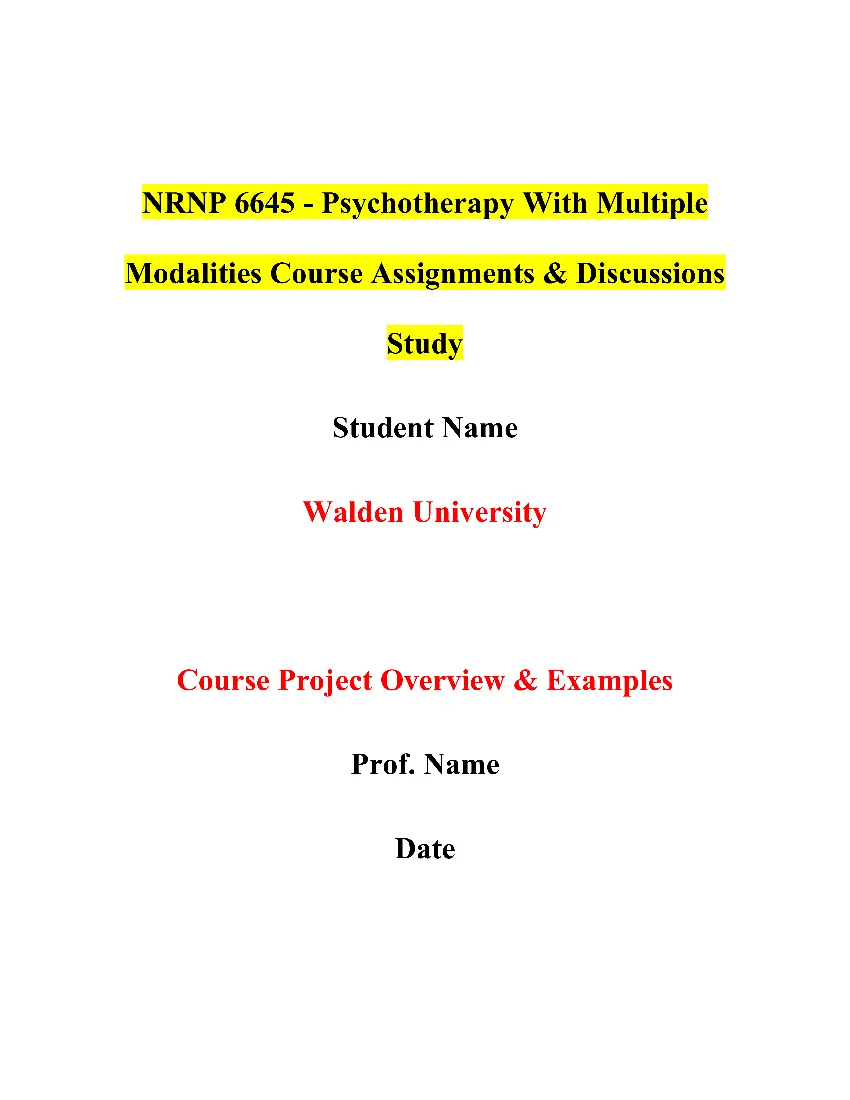 NRNP 6645 – Psychotherapy With Multiple Modalities Course Description
NRNP 6645 – Psychotherapy With Multiple Modalities Course Description

 NRNP 6635 – Psychopathology and Diagnostic Reasoning Course Description
NRNP 6635 – Psychopathology and Diagnostic Reasoning Course Description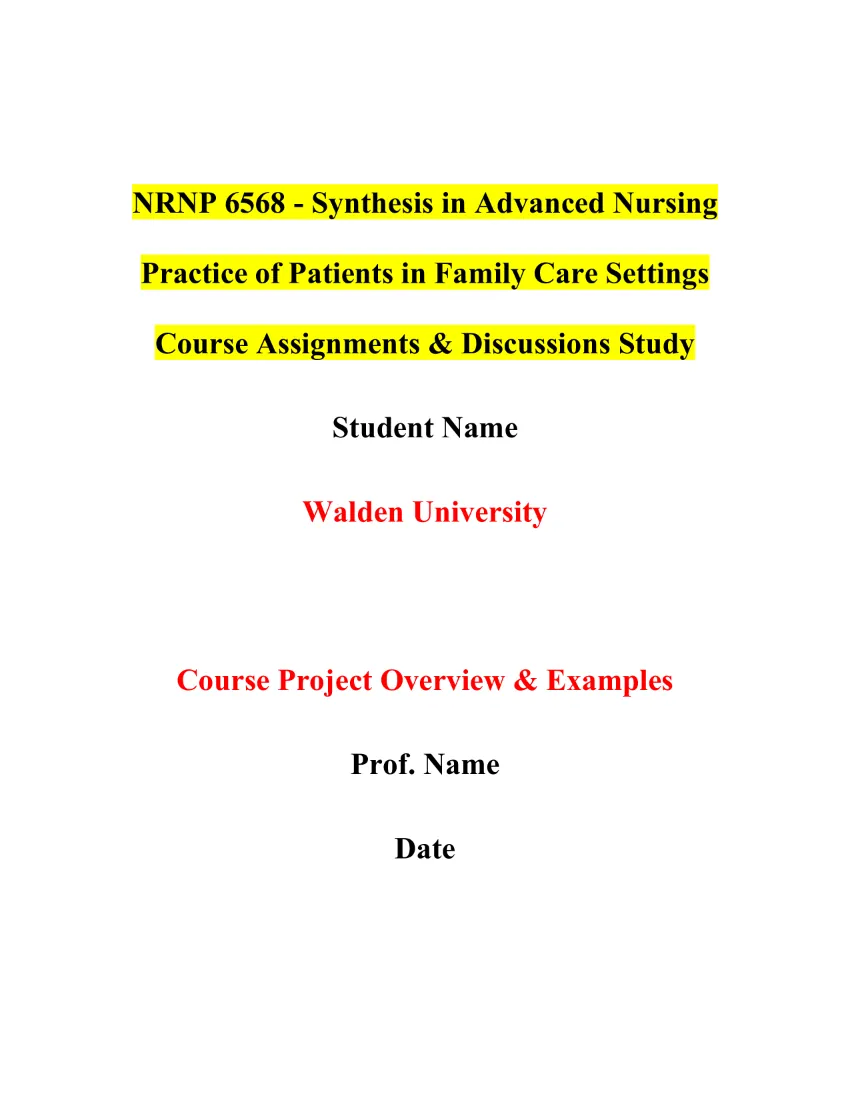 NRNP 6568 – Synthesis in Advanced Nursing Practice of Patients in Family Care Settings Course Description
NRNP 6568 – Synthesis in Advanced Nursing Practice of Patients in Family Care Settings Course Description NRNP 6560 – Advanced Care of Adults in Acute Settings III Course Description
NRNP 6560 – Advanced Care of Adults in Acute Settings III Course Description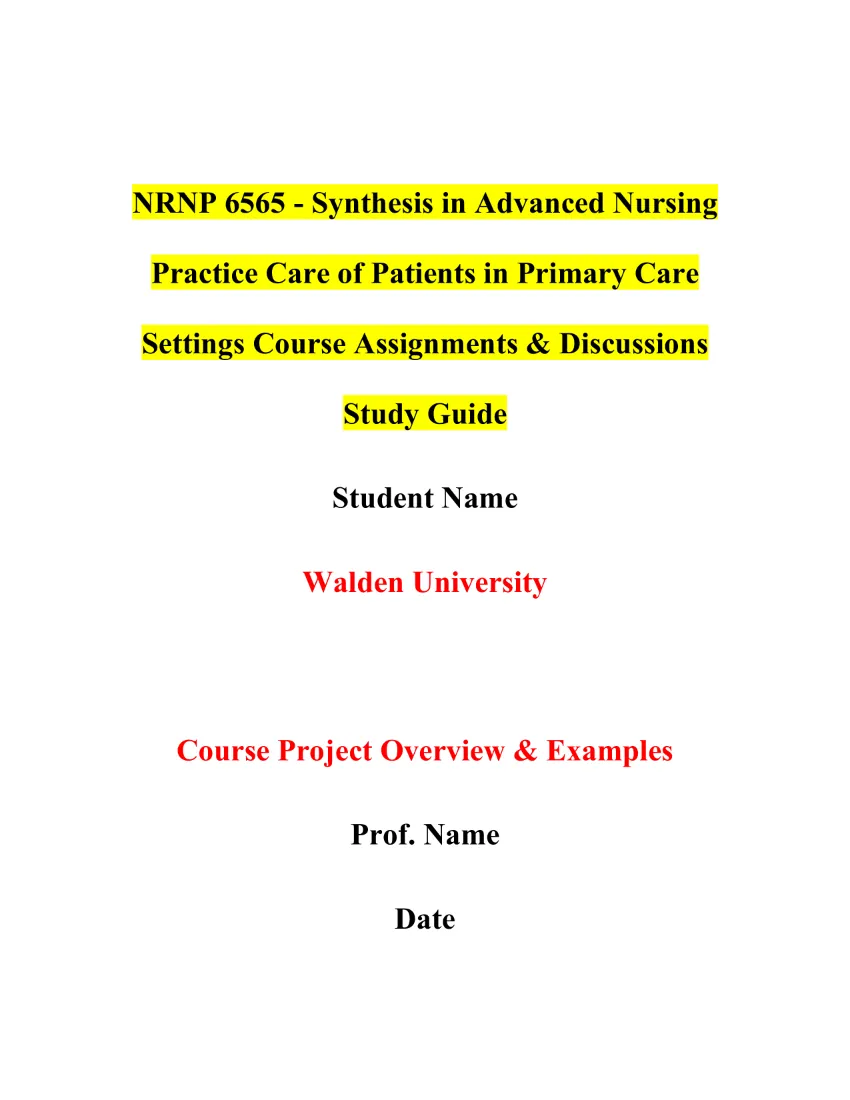 NRNP 6565 – Synthesis in Advanced Nursing Practice Care of Patients in Primary Care Settings Course Description
NRNP 6565 – Synthesis in Advanced Nursing Practice Care of Patients in Primary Care Settings Course Description NRNP 6541 – Primary Care of Adolescents and Children Course Description
NRNP 6541 – Primary Care of Adolescents and Children Course Description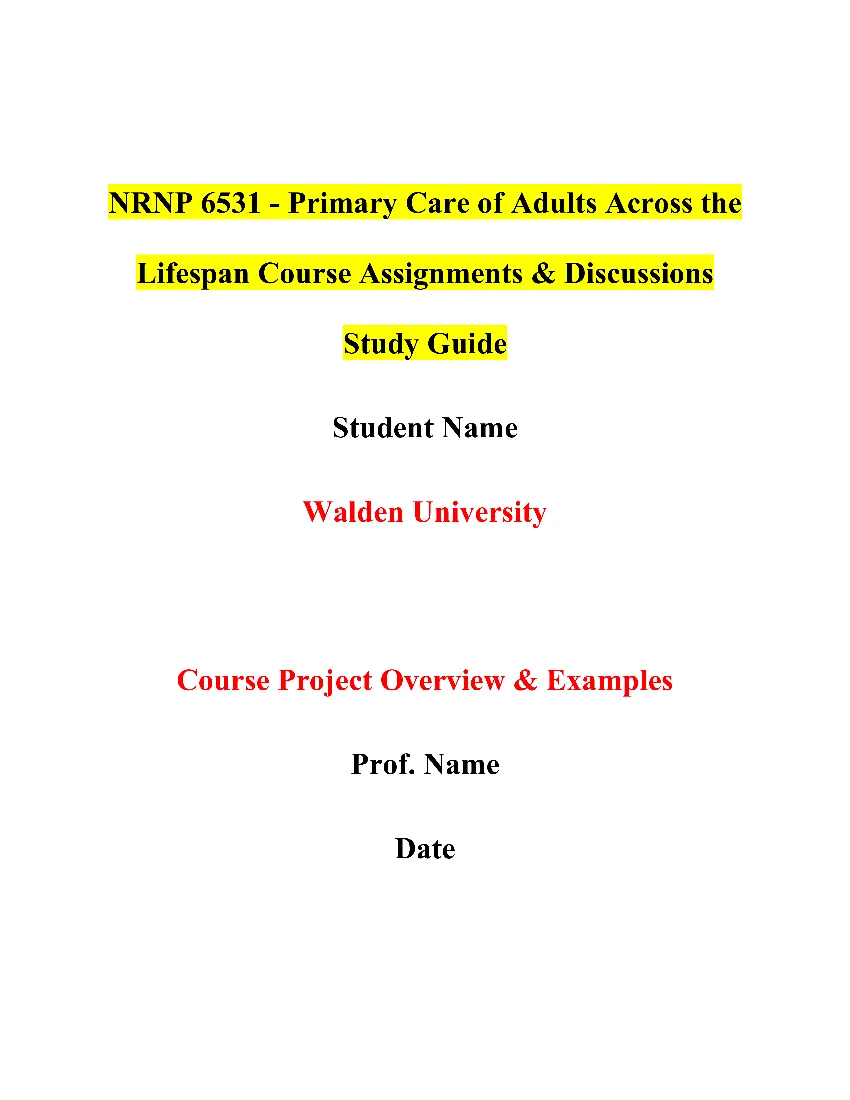 NRNP 6531 – Primary Care of Adults Across the Lifespan Course Description
NRNP 6531 – Primary Care of Adults Across the Lifespan Course Description NR-103: Transition to the Nursing Profession Course Description
NR-103: Transition to the Nursing Profession Course Description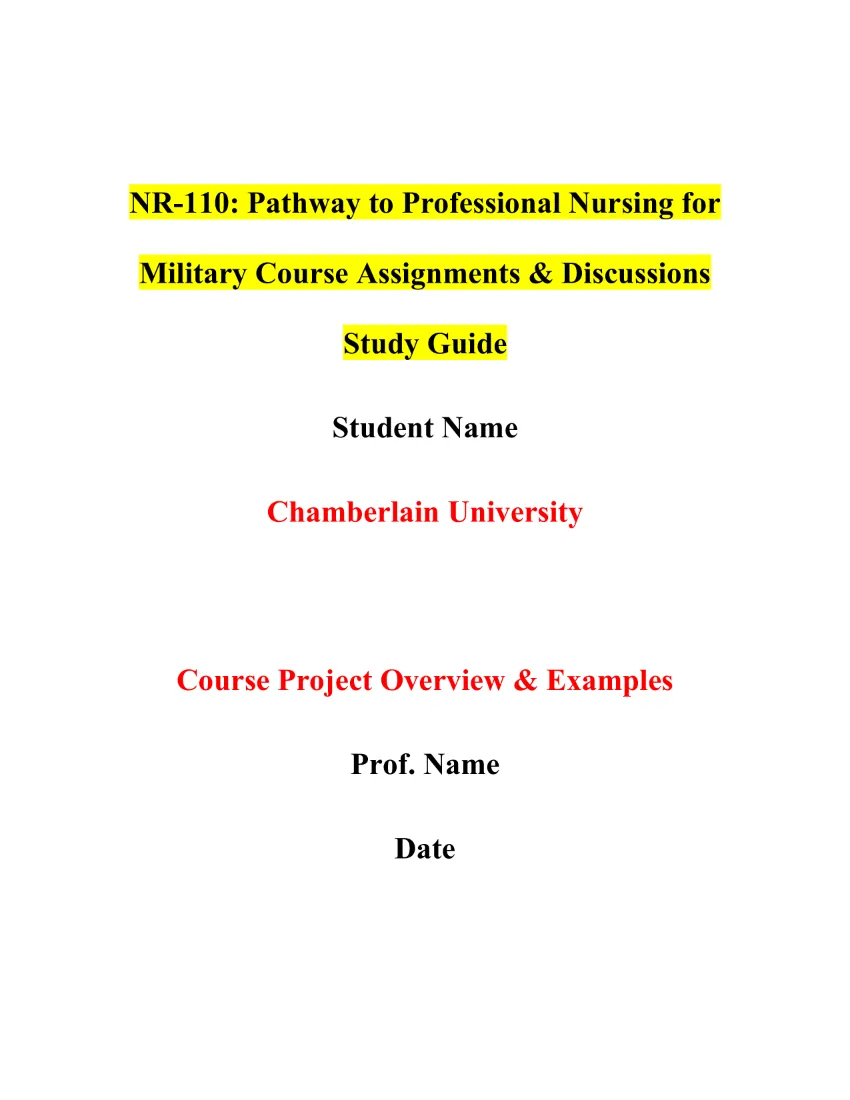 NR-110: Pathway to Professional Nursing for Military Course Description
NR-110: Pathway to Professional Nursing for Military Course Description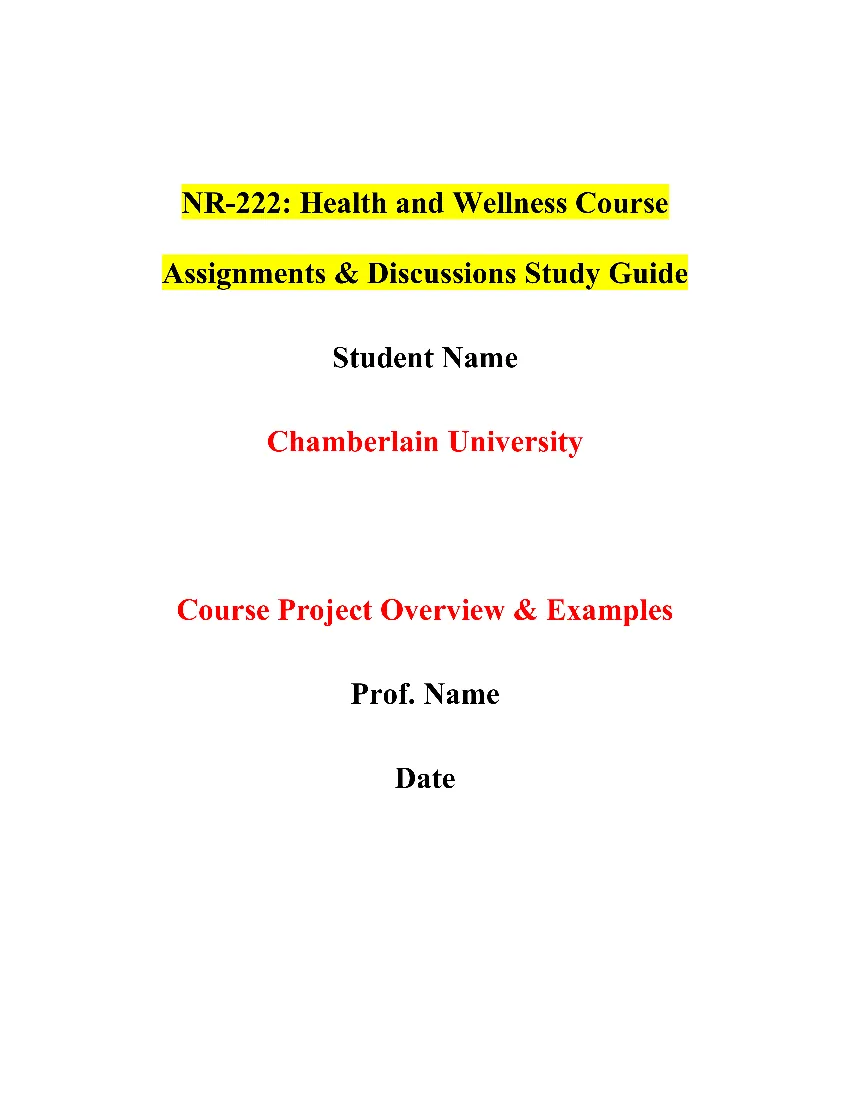 NR-222: Health and Wellness Course Description
NR-222: Health and Wellness Course Description